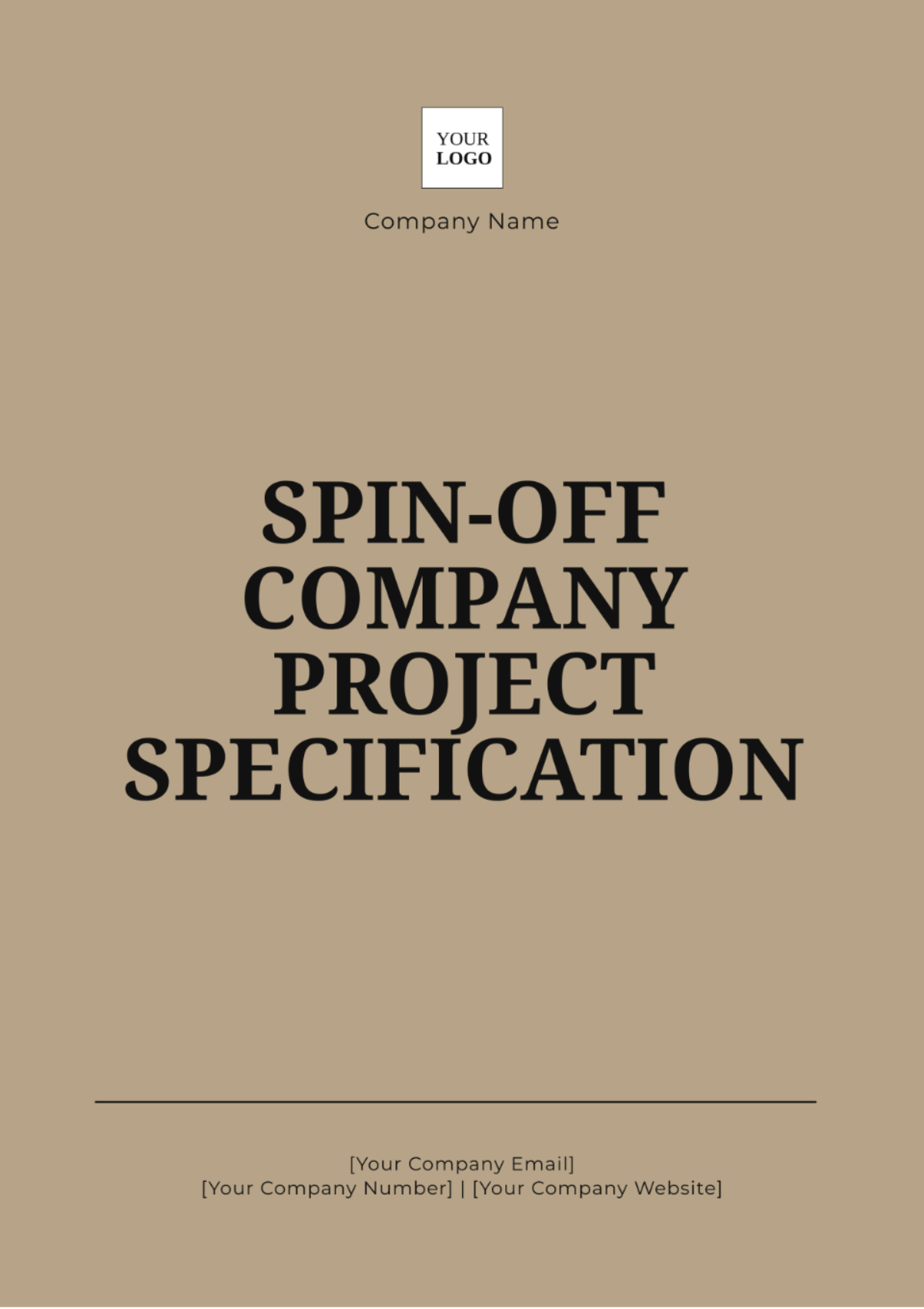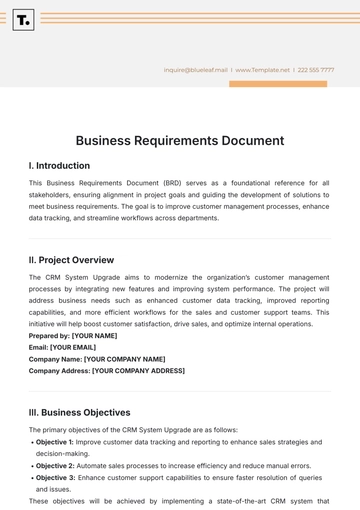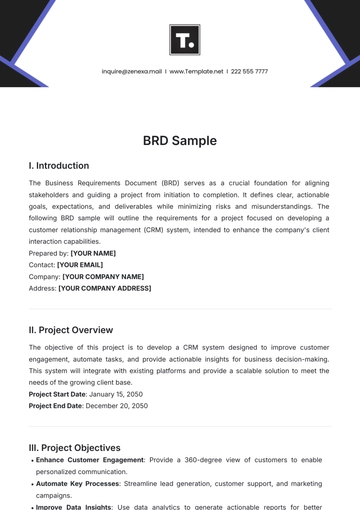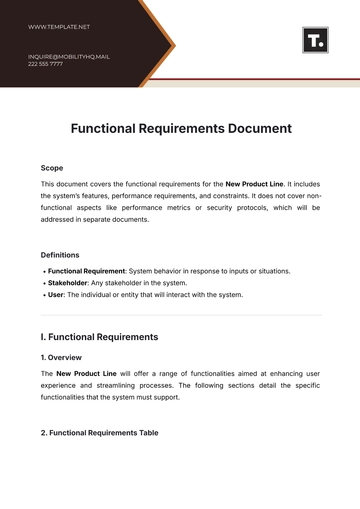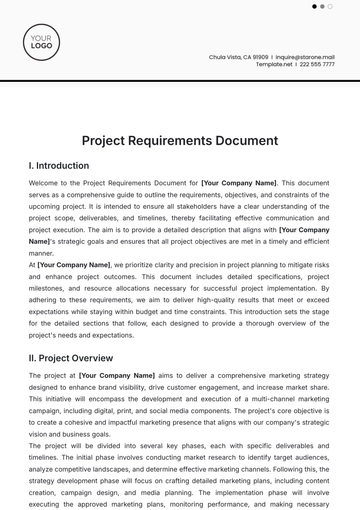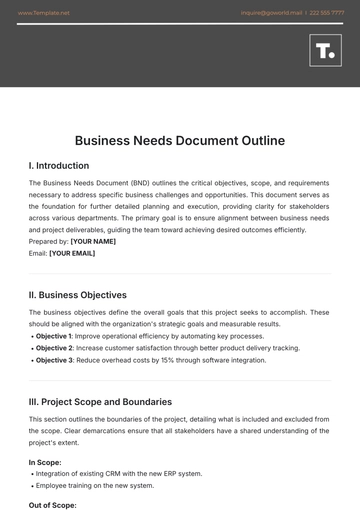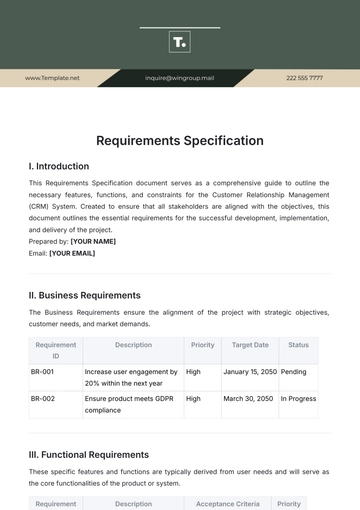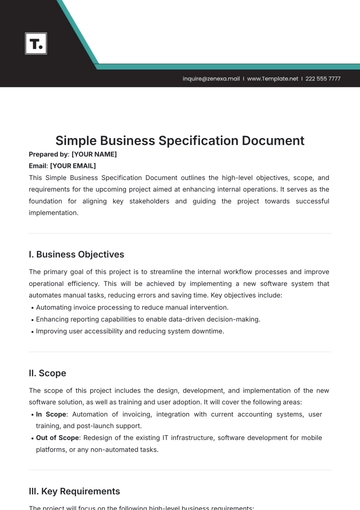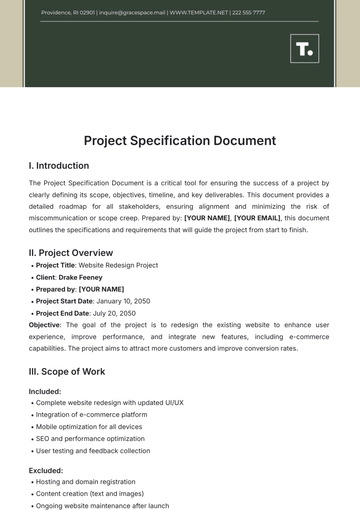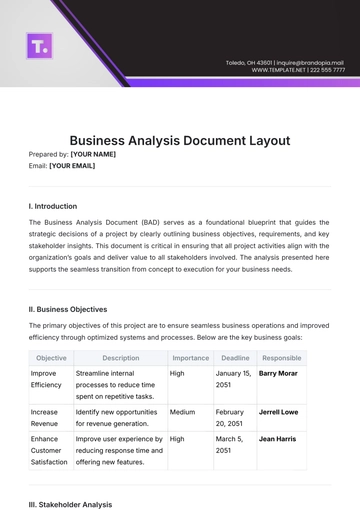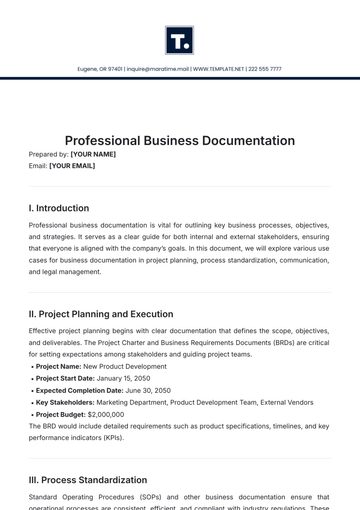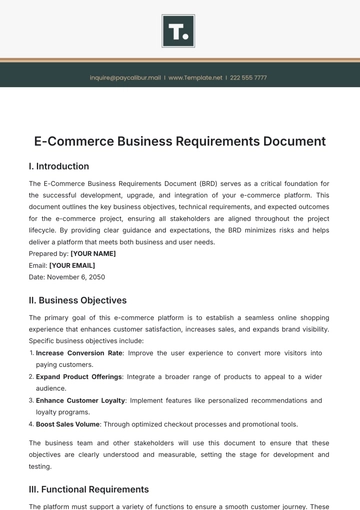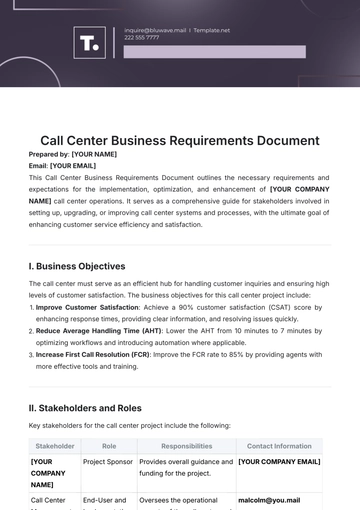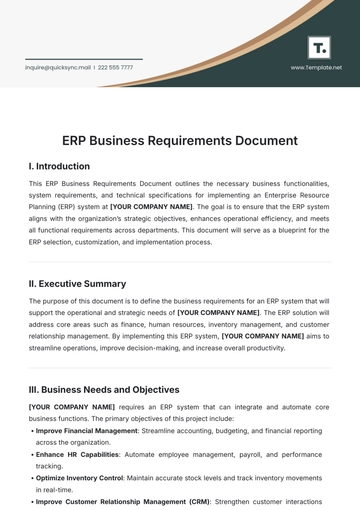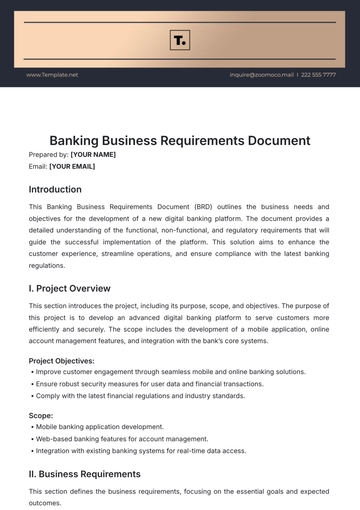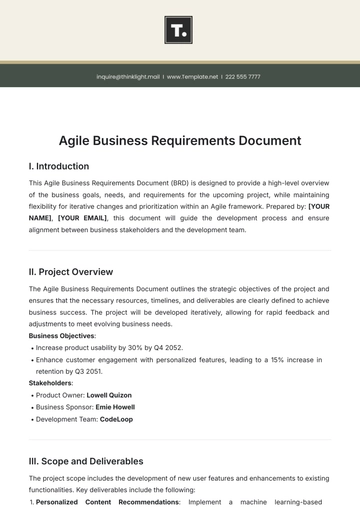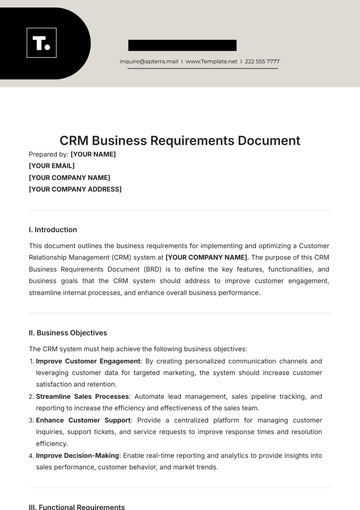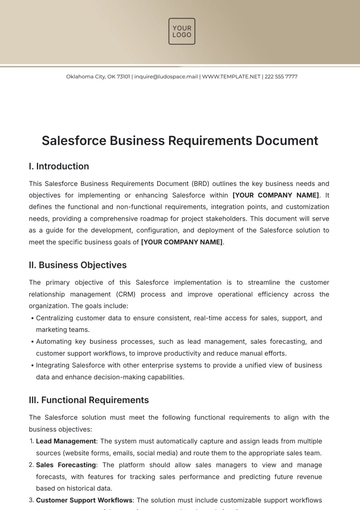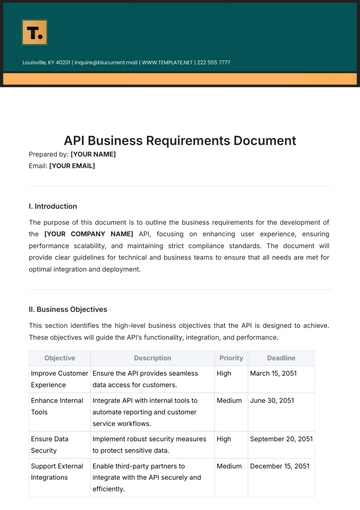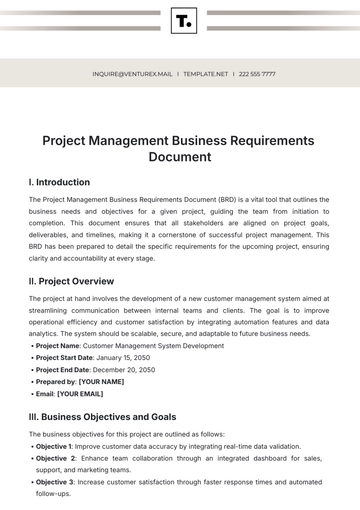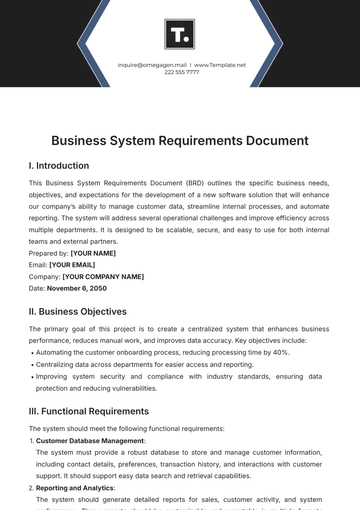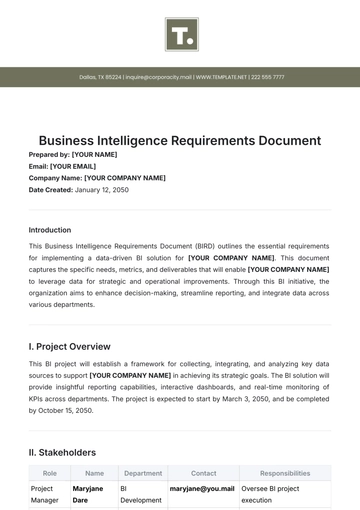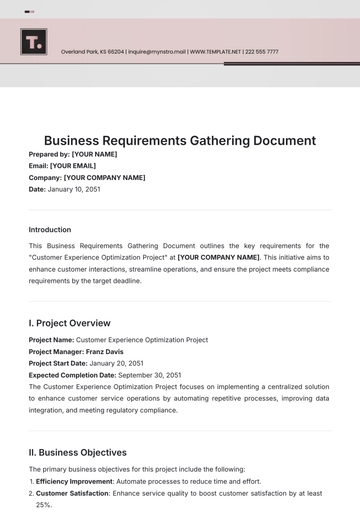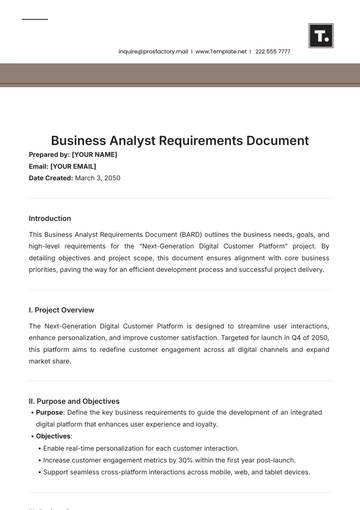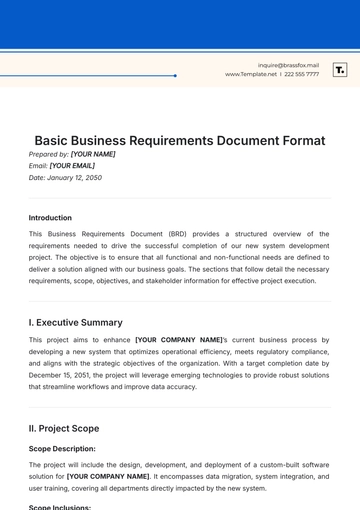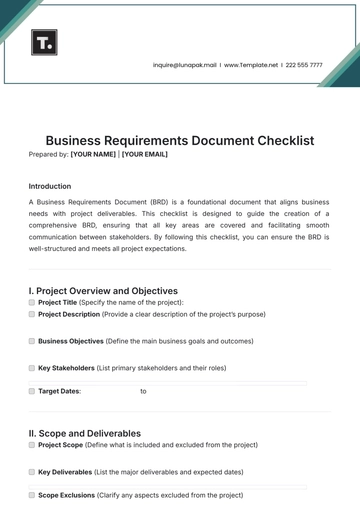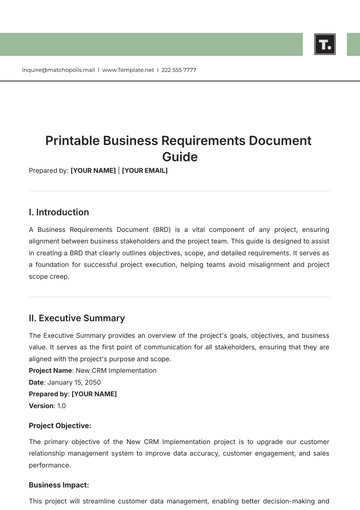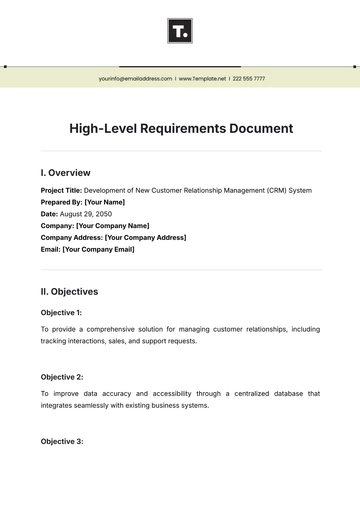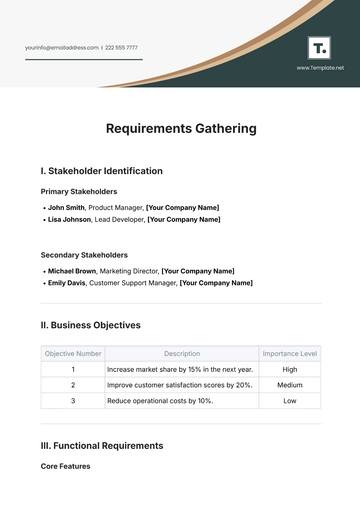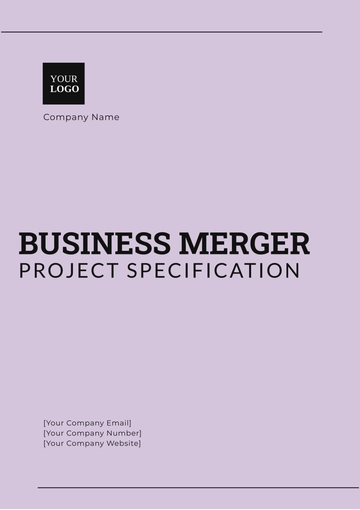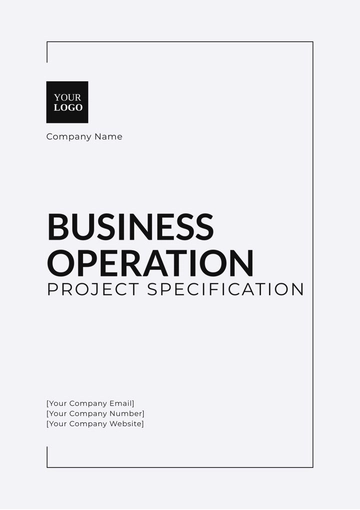Spin-off Company Project Specification
Prepared By: [YOUR NAME]
Date: [DATE]
I. Executive Summary
The objective of this project is to create a spin-off company that aligns with the parent company's strategic goals. This new entity will focus on leveraging a unique market opportunity identified through extensive research. The strategic importance of this spin-off lies in diversification, innovation, and capturing new market segments, ultimately contributing to the parent company's growth and long-term competitiveness.
II. Project Scope
This project includes the establishment of a new company, the development of its business model, market entry strategy, and operational framework. It will not cover any activities related to the ongoing operations of the parent company post-spin-off, detailed product development cycles beyond initial prototypes, or human resources integration outside key leadership roles.
III. Market Analysis
Extensive market research has been conducted to understand the target market, competitors, and potential customers. This analysis provides a foundation for strategic decision-making.
A. Target Market
Demographics
Geographical Locations
Urban vs. Rural: Primarily urban areas with high density, but expanding into suburban regions
Regional Preferences: Focus on major metropolitan areas with significant market potential
Psychographics
Lifestyle: Health-conscious, tech-savvy, and value convenience
Values: Sustainability, quality, and innovation
Interests: Technology, wellness, and eco-friendly products
B. Competitors
Competitor | Overview | Share | Strengths | Weaknesses |
|---|
Competitor 1 | Premium tech gadgets | 30% | Strong brand, high-quality, broad distribution | High price, limited range |
Competitor 2 | Affordable, innovative tech solutions | 15% | Competitive pricing, customer engagement | Limited presence, lower loyalty |
Competitor 3 | Eco-friendly tech products | 20% | Sustainability, niche appeal | High costs, scalability issues |
C. Potential Customers
Customer Segment | Characteristics | Needs | Purchasing Behavior |
|---|
Segment 1 | Young professionals, tech enthusiasts | Cutting-edge tech, high performance | Frequent buyers, online shopping, value reviews |
Segment 2 | Middle-aged, eco-conscious consumers | Sustainable, energy-efficient products | Research-driven, premium eco-friendly options |
Segment 3 | Families, value-oriented buyers | Affordable, durable tech | Price-sensitive, seek deals, in-store shopping |
IV. Business Model
The new company's business model is designed to create value for customers while generating sustainable revenue streams. The focus will be on innovative products/services, customer-centric strategies, and partnerships.
A. Revenue Streams
Primary Revenue Streams: Revenue will mainly be derived from direct sales of innovative, customized products and subscription services that provide premium features or exclusive content, thereby creating consistent income.
B. Value Propositions
V. Organizational Structure
The newly established company will be structured in such a way that it guarantees operational efficiency, clearly defined roles and responsibilities for each team member, and a streamlined process for making informed and timely decisions.
Key Roles and Responsibilities
CFO: Manages financial planning, forecasting, budgeting, and investment relations to ensure sustainable organizational growth and robust financial health.
VI. Financial Projections
A meticulously crafted financial plan has been created, detailing budgetary needs, potential funding sources, and precise revenue forecasts based on market conditions and strategic goals to ensure smooth operations and growth.
A. Budget Requirements
Category | Projected Cost |
|---|
Initial Capital Expenditure | $500,000 |
Operational Expenses (Year 1) | $1,200,000 |
Marketing and Sales | $400,000 |
B. Funding Requirements
Initial Seed Funding: $700,000
Venture Capital: $1,000,000
C. Revenue Projections
D. Financial Risk Analysis
Financial Risk: Ensuring a strong capital structure through prudent financial management, maintaining adequate liquidity reserves, and securing diverse funding sources to safeguard against financial instability.
VII. Legal and Regulatory Considerations
The new company pledges to follow all relevant laws, regulations, and industry standards to ensure its operations remain legally compliant and ethically sound.
A. Compliance
Intellectual Property: Protecting the company's innovations and brand through trademarks, patents, and copyrights, and actively monitoring for infringements to safeguard intellectual property rights.
B. Regulatory Approvals
VIII. Project Timeline and Milestones
The project timeline provides a clear roadmap for the establishment and operational readiness of the new company.
Milestone | Completion Date |
|---|
Project Initiation | January 2050 |
Market Analysis and Business Model Development | April 2050 |
Organizational Structure and Key Hires | July 2050 |
Financial Planning and Fundraising | October 2050 |
Operational Setup and Kickoff | January 2051 |
IX. Risk Management Plan
A. Risk Identification
B. Mitigation Strategies
Project Specification Templates @ Template.net
